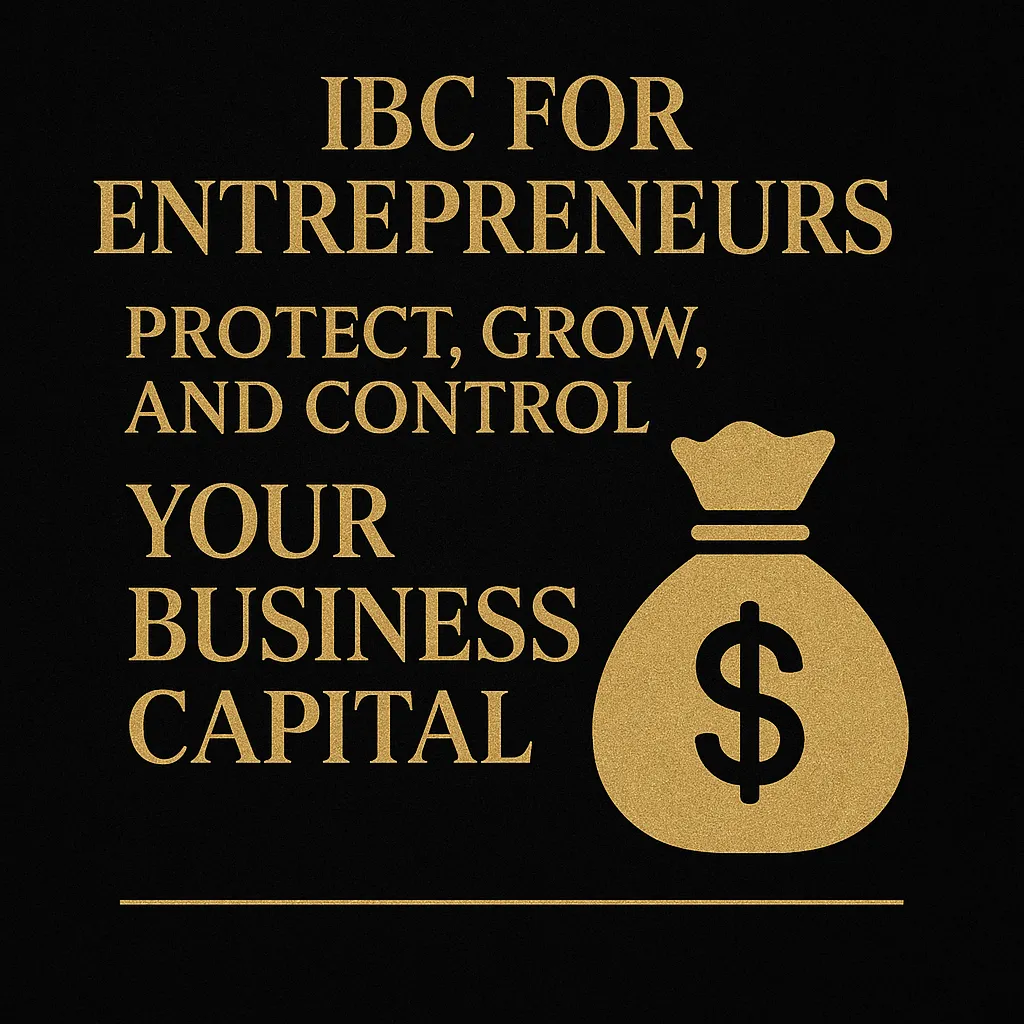
IBC For Entrepreneurs
IBC for Entrepreneurs: Protect, Grow, and Control Your Business Capital
Entrepreneurship is about solving problems, creating value, and taking control of your financial destiny. But one thing many business owners overlook is how vulnerable their company can become when something unexpected happens.
What happens to your business if you, a co-owner, or a key employee passes away or becomes unable to work? How do you protect the company, your family, and the legacy you’ve built?
That’s where life insurance—and more specifically, the Infinite Banking Concept (IBC)—comes into play.
IBC isn’t just a personal wealth strategy. When used correctly, it becomes one of the most powerful tools available to entrepreneurs—offering protection, stability, and a source of accessible capital under your control. Very little in the world of entrepreneurship is guaranteed, but you have the ability to create an asset that compounds and grows every single day, guaranteed, to give you a more stable foundation to build off of.
Step 1: Protecting the Foundation — Key Person Insurance
Every business has people who are essential to its success. Maybe it’s the founder who brings in clients, the operations manager who keeps things running, or the top salesperson who drives revenue.
If one of these key people were suddenly gone, the financial strain could be devastating. Key person insurance is designed to protect the business from that loss.
Here’s how it works:
The business takes out a life insurance policy on the key person.
The business is the owner, payer, and beneficiary of the policy.
If that key person passes away, the death benefit provides the company with immediate, tax-free liquidity to cover lost income, hire a replacement, or stabilize operations.
This isn’t just about protection—it’s about resilience. You’re giving your business the ability to weather uncertainty without crippling your cash flow or taking on debt.
Step 2: Planning for Continuity — Buy-Sell Agreements
If your business has multiple owners, a buy-sell agreement is one of the most important pieces of your overall financial strategy.
It ensures that if one owner passes away, becomes disabled, or retires, there’s a clear plan—and funding mechanism—in place for the remaining owners to buy out their share.
When funded through a life insurance policy, this plan becomes seamless:
The company (or other partners) owns life insurance policies on each owner.
If one passes away, the death benefit provides the exact capital needed to buy their shares.
The transfer is smooth, immediate, and tax-efficient.
Without life insurance, the surviving owners are left scrambling—often forced to take on debt, liquidate assets, or sell off parts of the business.
A properly structured buy-sell agreement funded by life insurance eliminates those risks entirely.
Step 3: Beyond Protection — Turning Life Insurance into a Financial Tool
Once your protection is in place, your policy doesn’t just sit idle. It can become a powerful financial tool inside your business. Turning the necessity of protection into one of your greatest assets. When structured properly, it becomes an incredibly efficient warehouse where you can store and grow your capital.
When structured properly as a Participating Whole Life Policy, the cash value inside the policy grows tax-advantaged, compounding year after year. Even better, that cash value can be accessed through policy loans whenever your business needs capital—no bank approval, no credit check, and no loss of control.
This gives entrepreneurs an incredible advantage:
Access to Liquidity: Use policy loans to fund business opportunities, bridge cash flow gaps, or make strategic investments. It is entirely up to you.
Tax Efficiency: Growth within the policy is tax-advantaged, and loans are typically tax-free.
Control: You set the repayment schedule, not a bank.
Guaranteed Growth: The cash value grows every day by contract—independent of market conditions.
In essence, you’ve created your own corporate banking system—one that serves your business for decades to come.
Step 4: Corporate-Owned Policies and Strategic Wealth Transfer
When life insurance is owned by a corporation, it brings additional advantages.
Premiums are paid with after-tax corporate dollars, which are often taxed at a lower rate than personal income.
Upon death, the policy’s death benefit is paid tax-free to the corporation.
The capital dividend account (CDA) can then distribute those funds tax-free to shareholders, creating one of the most efficient wealth transfer tools available to Canadian business owners.
This turns a protection tool into a strategic corporate asset—supporting both the business and your family’s financial legacy.
The Infinite Advantage
The Infinite Banking Concept isn’t just a way to build wealth—it’s a way to take back control.
For entrepreneurs, control is everything. Control over cash flow, financing, and decision-making means the difference between surviving and scaling.
When you integrate IBC into your business, you move from borrowing from banks to borrowing from yourself. You shift from reacting to financial challenges to proactively creating opportunities.
In short, you become the banker in your own business.
Final Thought
Most entrepreneurs start their business to create freedom—but too often, they give that freedom away to lenders, creditors, or markets they can’t control.
IBC changes that.
It gives you the structure to protect your business, the flexibility to grow it, and the confidence to know your capital is always working for you.
At Endurys Wealth Solutions, we coach entrepreneurs through this process every day. Once you understand the flow of money in your business—and learn how to own the banking function behind it—you’ll never look at financing, taxes, or risk the same way again.